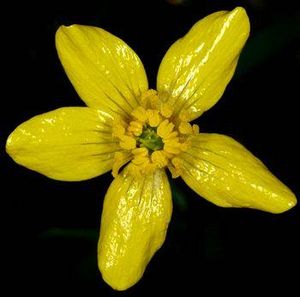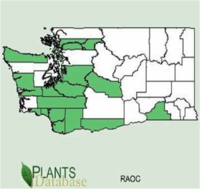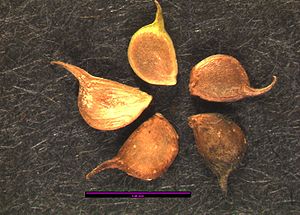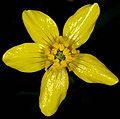Difference between revisions of "Ranunculus occidentalis"
| Line 22: | Line 22: | ||
}} | }} | ||
| − | |||
| − | |||
| − | |||
| − | |||
| − | |||
| − | |||
| − | |||
| − | |||
| − | |||
| − | |||
| − | |||
| − | |||
===Description=== | ===Description=== | ||
Revision as of 11:04, 21 May 2012
Ranunculus occidentalis, or the Western buttercup, is a flowering plant of the Ranunculaceae family.
| " | Ranunculus occidentalis | |
|---|---|
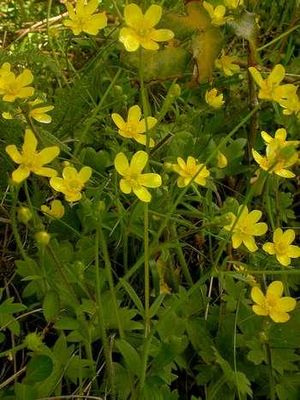
| |
| Ranunculus occidentalis | |
| " | Scientific classification | |
| Kingdom: | Plantae |
| Subkingdom: | Tracheobionta |
| Phylum: | Spermatophyta |
| Subphylum: | Magnoliophyta |
| Class: | Magnoliopsida |
| Subclass: | Magnoliidae |
| Order: | Ranunculales |
| Family: | Ranunculaceae |
| Genus: | Ranunculus |
| Species: | Ranunculus occidentalis Nutt. |
Contents
Description
Stiff-hairy perennial from slender fibrous roots, the 1-several stems erect, usually hollow, freely branched, 1.5-4 dm. tall. Basal leaves long-petiolate, the blades 2-3.5 cm. long, deeply 3-lobed, the lobes with coarse, rounded teeth; cauline leaves alternate, more deeply dissected, reduced upward to the entire bracts. Pedicels single-flowered, up to 10 cm. long; sepals 5, greenish or pinkish-tinged, spreading but sharply reflexed at mid-length, hairy, early-deciduous; petals 5, yellow, oblong, 9-12 mm. long and nearly half as broad; nectary scale broadly wedge-shaped, 1 mm. long, the lateral margins free ¾ their length; receptacle ovoid; stamens 30-60; pistils 10-20. [1] [1]
Bloom Period
April-June [1]
Distribution
West of the Cascades, Alaska to California, and east to the Blue mountains in Oregon. [1]
Habitat
Moist to well-drained soil, low to mid-elevations in the mountains. [1]
Uses
Landscaping: Meadow communities, lawn conversions or borders First Nations: The juice from the flowers was used as a poison. Seeds can be cooked and used as piñole either on their own or mixed with other seeds. The seed must be parched in order to remove an acrid principle.
Propagation
Seed
Abbreviation: RAOC
Seed sample from: 2011
Average Measurement: 3.5 x 2.6 x 1
Measurement Range: L: 3 - 4, W: 2 - 3, D: 0.75 - 1.25
Features
Shape: Seed surface is rounded, tapering off to a style that is opposite hilum, but off centered from it.
Additional structures: Style generally 1 – 2 mm long.
Color: Seeds are brown, tending toward a lighter brown or tan at edges of seed surface.
Surface: Seeds are papillose with some small ridges around the surface edges.
Latitudinal Cross Section: elliptical ![]()
Longitudinal Cross Section: elliptical ![]()
Basic Explanations and Assumptions:
The dimensions for the seeds are length x width x depth. The location of the hilum is used as the base of the seed, and the length is measured from hilum to the opposite apex. Where a style is present, the length is measured from the hilum to the bottom of the style. Width is measured at a right angle to the length at the widest part. Depth is measured at a right angle to the intersection of height and width lines.
Measurements included are the mean average for each measurement of ten separate seeds.
All measurements in millimeters unless otherwise noted.

